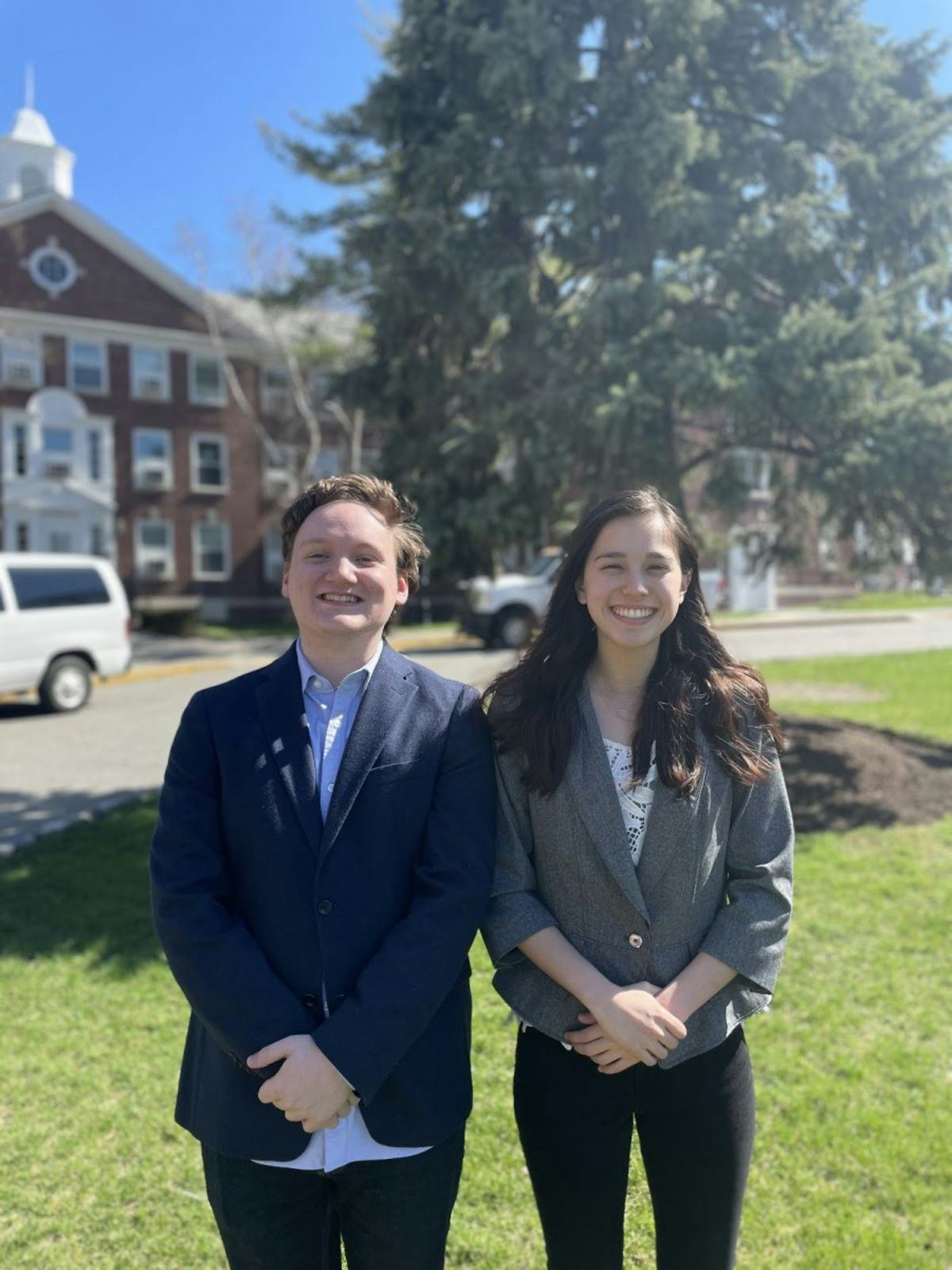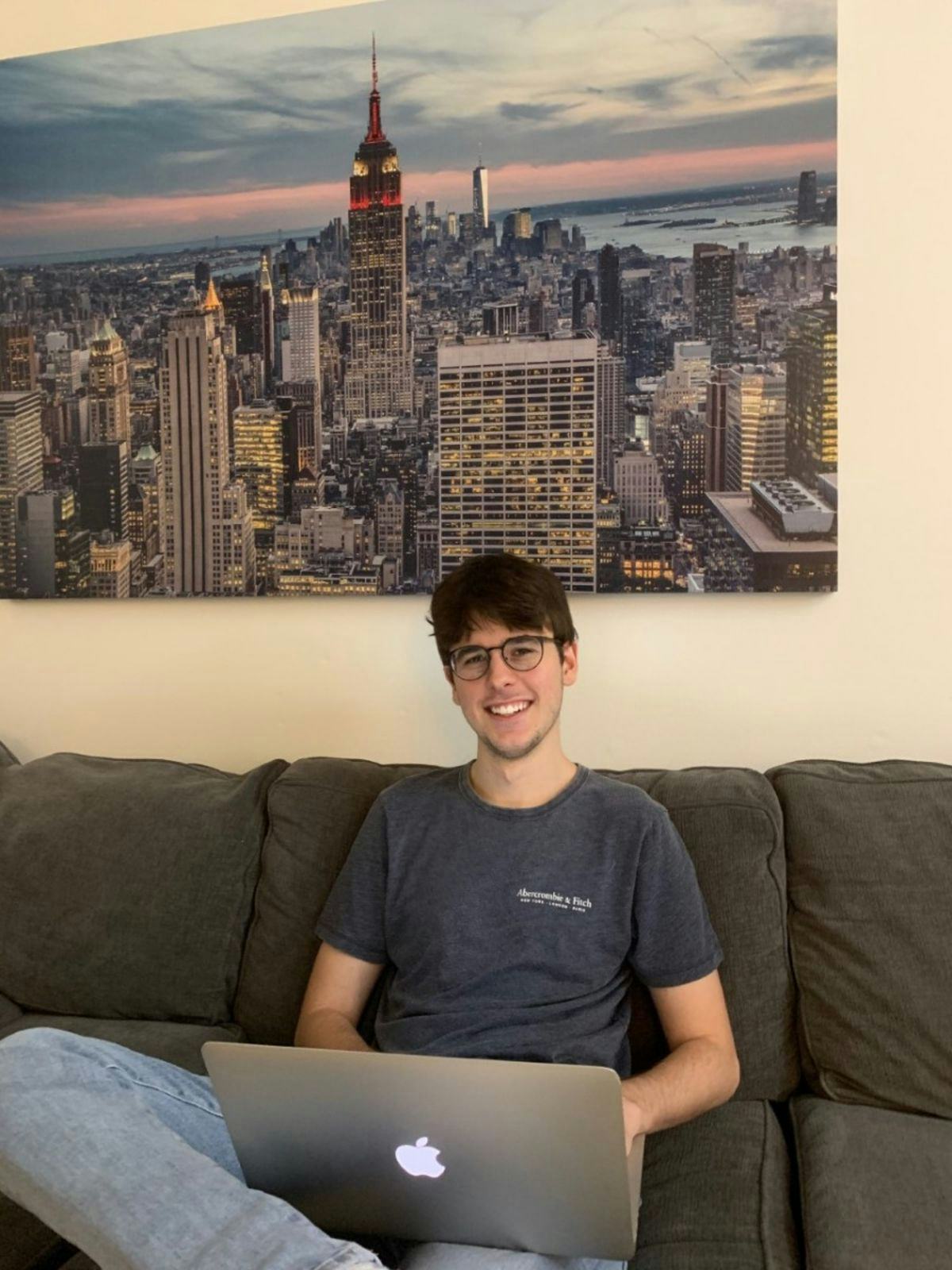Exploring the Evolving Partnership Between Humans and Artificial Intelligence
Inaugural Stevens Institute of Technology AI Research Summer (AIRS) Fellowship Program empowers students to advance innovative research
You don’t need to have a self-driving Tesla vehicle, a Roomba robotic home vacuum, or even an Amazon Alexa to understand that artificial intelligence (AI) is revolutionizing modern life, and the impact extends far beyond the practical convenience these innovations offer.
The Stevens Institute for Artificial Intelligence (SIAI), led by Jason Corso, professor of computer science, is collaborating with leaders within the university and beyond to research AI and machine learning applications. This year, it expanded its circle to cultivate early talent in this space through the first-ever AI Research Summer (AIRS) Fellowship Program.
The highly competitive, three-month program was designed to foster increased undergraduate student involvement in cutting-edge AI research. Each AIRS Fellow receives a $10,000 summer stipend, access to SIAI resources including a mentor, and an opportunity to present the project and its results to the Stevens AI community.
“The students learn to manage, plan and execute their project,” Corso explained. “They are exposed to research at earlier levels than they might otherwise have found possible. When I was a second-year undergraduate, I participated in a similar summer research experience. I still look back on that experience today as a pivotal moment in my career trajectory, and I hope our AIRS program will impact their career path as well.”
The 2021 program theme, “Humans and AI: An Evolving Partnership,” focused on AI’s often-controversial impact on society, from mobility to healthcare, education to finance, and more.
“There is a commonly felt fear that AI is going to replace humans’ jobs,” Corso said. “But we believe that what’s evolving is how we approach work. We will see humans and AI systems working closely in concert to achieve valuable outcomes. Implanting this idea in the undergraduate AIRS Fellows to see how they believe AI and humans can work together was an important goal for this year's program.”
The 2021 AIRS Fellows and their projects included:
Modeling Homeless Characteristics to Support Interventions, Jolene Ciccarone, Software Engineering, Class of 2024, and Jared Donnelly, Computer Science, Class of 2024, mentored by Samantha Kleinberg, associate professor in the Department of Computer Science
Impact of AI Companion on Nursing-Home Residents, Sakina Rizvi, Business and Technology, Class of 2022, mentored by Donald Lombardi, executive director of the Stevens Healthcare Educational Partnership
Natural Language Processing AI in Customer Feedback Analysis, Pawan Perera, Electrical Engineering, Class of 2023, mentored by Jia Xu, assistant professor in the Department of Computer Science
ALPHAAI: Not Alone Investing, Ryan Finegan, Business and Technology, Class of 2022, mentored by Dragos Bozdog, deputy director of the Hanlon Financial Systems Center
Skincare and AI: How AI Technology Can Decommercialize Luxury Skincare Services, Serena Lee, Software Engineering, Class of 2023, mentored by Mukund Iyengar, assistant professor of Electrical and Computer Engineering
Visually Enhanced Podcasts, Burak Yesil, Computer Science, Class of 2024, mentored by Jason Corso
Read on to learn more about some of these exciting projects and how they might someday be making a positive difference in your daily life.
When it comes to helping the homeless, knowledge is power
Homelessness affects everyone – not only the people living on the streets, whose substandard living conditions can cut years from their lives, but also the communities struggling to help them with everything from housing, bedding, toiletries, clothing, and jobs to COVID-19 vaccinations and other healthcare services.
Jolene Ciccarone and Jared Donnelly, who became friends during their first days at Stevens nearly a year ago and participate in the Stevens Health and AI Lab, teamed up this summer to help New York City non-profits, government agencies and policymakers make better-informed decisions and preparations for homeless populations. Using educational, financial and weather data, they worked to use AI to predict the numbers and characteristics of people who might seek shelter in the city at a given place and time.
“With the number of homeless people in New York City estimated to rival the entire population of Hoboken, it is clear that there is a homelessness problem,” Donnelly said. “We aimed to approach homelessness from a preventive rather than a reactive perspective, using the powerful predictive applications of AI and machine learning to improve resource allocation. We were inspired by Eric Rice’s AI work at the University of Southern California to help identify homeless youth to effectively disseminate public health information, and we saw the AIRS Fellows Program as a great opportunity to learn more about AI and machine learning while researching this cause that is important to us.”
It’s also a breakthrough in the space.
“Through our research, we’ve seen modeling of other populations or conditions, and we’ve seen AI used for homelessness issues,” Donnelly said, “but we have yet to find any other examples which attempt to model homeless populations using machine learning or AI.”
Their analytical approach involves gathering nearly overwhelming amounts of open-sourced New York City unemployment, weather, high school graduation, shelter population and other data – spanning every single day for the past eight years – and then analyzing how these factors are related to the numbers and demographic characteristics of people in shelters.
Harnessing all that data was the first challenge.
“They say the hardest thing is formatting your data sets, and that was true,” Ciccarone said. “We’re using Python pandas data analysis software, and the data has to be combined and formatted in a certain way, but even the dates weren’t in the order we needed. We’ve read a lot of articles and watched a lot of YouTube videos to learn about how to use these tools! It’s been helpful to our progress not only in the project, but also toward being more well-rounded scientists and engineers.”
They have also developed helpful relationships with industry contacts, including members of The Health & Housing Consortium. Their next steps are to continue to improve the model’s accuracy, to make their work accessible to the public so these and other experts are better equipped to help people who are homeless, and perhaps even to expand to other cities.
“We’re making our code open-source, so anyone can access it, and we’re also looking into the possibility of hosting an interactive, public website,” Donnelly explained. “When people are better informed about homelessness, they might be more likely to donate or advocate for better resource allocations or better programs.”
Collaboration is definitely a key theme for their project.
“Not only am I working with one of my best friends, but we’re also working alongside other amazingly talented people in the AIRS program,” Ciccarone said. “They’re great to have when bouncing ideas around or when you’re lost and don’t know what to do next. Their focus and drive keep us motivated, and their brilliant ideas inspire us on a creative level. We’re excited to learn how to analyze data, connect with non-profit organizations, and program AI models while working toward a service that can help those populations most in need.”
Could a robot companion help grandma and grandpa live happier lives?
It’s been said that reality is stranger than fiction, but for Sakina Rizvi, science fiction inspired scientific reality this summer, as characters from a book and a movie sparked her quest to help improve the lives of the elderly using AI-based, human-like companionship.
“Earlier this year, I read The Plus One, a heartwarming novel about a brilliant but socially inept robotics engineer who builds her own date to her sister's wedding, and she ends up learning more about companionship than she ever expected,” Rizvi noted. “I also enjoyed the Disney movie Big Hero Six, which includes Baymax, an inflatable computerized robot healthcare companion. With those examples in mind, I decided to focus my research on understanding the emerging role of AI in healthcare, and analyzing how interacting with a robot can represent a potential solution to the social isolation of aging facility residents, including possible challenges and ethical concerns.”
It’s an ongoing, documented concern with no easy answers.
“It's easy for us to get wrapped up in our own lives, and the elderly don’t want to be a burden, but it’s creating a loneliness epidemic,” she explained. “I read an article by Emily Paulin from AARP that said social isolation and loneliness are associated with a 50 percent increased risk of developing dementia, 32 percent increased risk of stroke, and a nearly four-fold increase in the risk of death among heart failure patients. And 43 percent of U.S. adults aged 60 plus reported feeling lonely. We're already at the level of inequality of public health crisis. Finding companions for the elderly is a big thing, so I figured, if the elderly in nursing homes are comfortable and could enjoy the companionship of AI robots, that could be a potential solution for tackling late-life loneliness and depression.”
Throughout the project, creative minds at Disney have continued to fuel her interest.
“I found an article talking about the realistic and interactive robots that Disney Research recently unveiled,” she said. “It’s a robot that can imitate human facial movements and identify people in the environment. Given the importance of how one person’s eyes gaze at another in social interactions, as well as the robot’s ability to communicate states and shape perceptions, it is apparent that gaze can function as a significant tool for an interactive robot character, and just remarkable that it’s already in development.”
Rather than creating such a companion, though, Rizvi has directed her project toward social science analysis, assessing the current situation and offering future solutions. Her research covers the types of senior care centers, the evolution of robotics, current uses of robots such as animatronics, and a vision of the ideal facility to integrate robotic companionship for seniors.
The COVID-19 pandemic was both an entry point and a roadblock for this research.
“COVID-19 has intensified the dangerous health risks of social isolation for older Americans, making it difficult for them to leave their houses and continue with their everyday routines,” she said. “My original plan was to conduct a field survey of nursing homes contending with the phenomenon of aging isolation, and to speak with the staff and residents to investigate what AI applications are being used and whether structured robot interactions could help improve the safety, quality and efficiency of healthcare. The COVID restrictions have prevented that so far, but I’m still working on doing it, even if it’s just virtually, to gain insight into the minds of current nursing home residents and understand their opinions.”
It’s a project that has become near and dear to Rizvi’s heart.
“AI is evolving every day, and the AIRS Fellowship is giving Stevens undergraduate students like me the chance to embark on exciting research journeys and explore topics that interest us,” she said. “I love the idea that my research could potentially make a lasting impact on somebody’s life. If I could help make at least one person feel a little less lonely, I'd consider myself successful in making a meaningful difference.”
Bringing a vision of more engaging and educational podcasts to life
So you decide you want to explore something new, perhaps cryptocurrency, and you find a Spotify podcast about the crypto market. You hear the term “ethereum” and wonder what it is, or perhaps you’re intrigued and want to know what it costs. Do you stop the podcast and start Googling? Do you give up on cryptocurrency because you’re already too confused?
With the project Burak Yesil spent his AIRS experience developing, you could keep listening with just a quick pause to check out the pop-up with a link to the definition or the image of the current price of the currency, right on the podcast platform.
“When I listen to a podcast, if I'm not familiar with the topic, that discourages me from continuing,” Yesil explained. “I decided to make a platform that eliminates this learning curve. It uses AI models and natural language processing to visually enhance the user experience by providing links and images, generated by analyzing keywords from podcasts, to help listeners better understand and engage with what’s being discussed.”
It’s a natural progression for Yesil, who has long been interested in both artificial intelligence and entrepreneurship. His research led him to several articles on Jason Corso, so when he learned that Corso was launching the AIRS program, he embraced the opportunity to leverage AI to evolve a large-scale project into a production level and fulfill his dream of becoming a startup founder.
Of course, dreams don’t work unless you do, and Yesil had at least his fair share of all-nighters to bring his project to life.
“This course was more complex than anything else I've worked on,” he said. “There was a lot of trial and error. I had no experience of natural language processing, and podcasts are large audio files, which require specific techniques and strategies to process so you don’t run out of storage. At first, it was only working with 30-second files, which is nowhere near production-level. I had to read a lot of articles, draw a lot of flowcharts and diagrams, develop natural language processing models, and figure out the most efficient way. Also, top tech tycoons say that the user experience is most important, and that's what I've been focusing on. I had nights when I didn’t sleep even a little bit. But I enjoyed it because I see programming as a form of entertainment, and once I got it to work with larger files, it was like a sigh of relief.”
Next up is the development of applications for users to sign up, log in, and use his product, first on a website, and then on a mobile app.
“I plan on working on that throughout the school year, and it will be released in the summer of 2022,” he said. “There's so much more to this project, and I plan on developing it throughout college to create a production-level product by the time I graduate.”
Learn more about SIAI:
Stevens Institute for Artificial Intelligence
Schaefer School of Engineering & Science Undergraduate Programs
Learn more about Artificial Intelligence research at Stevens→





